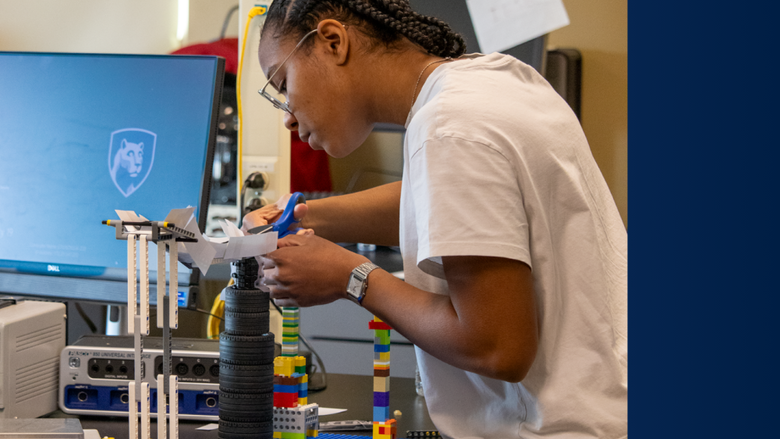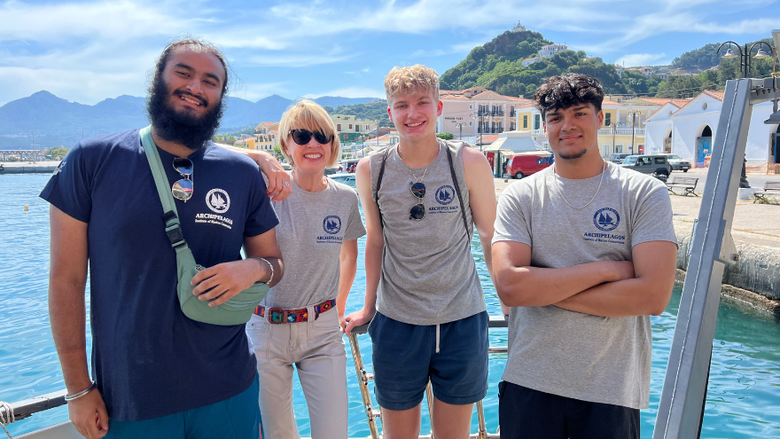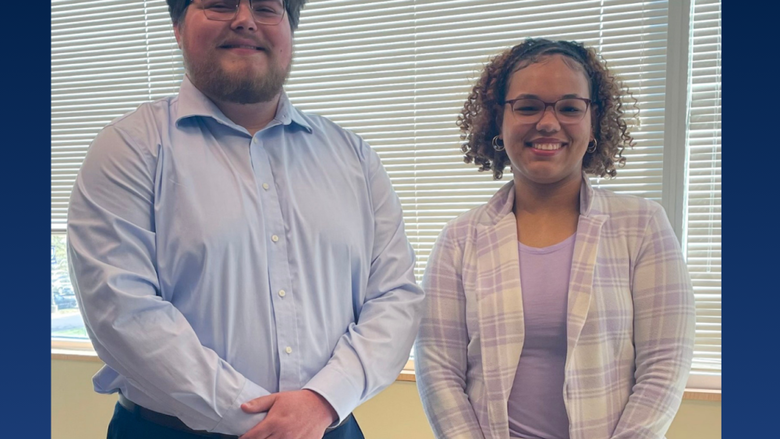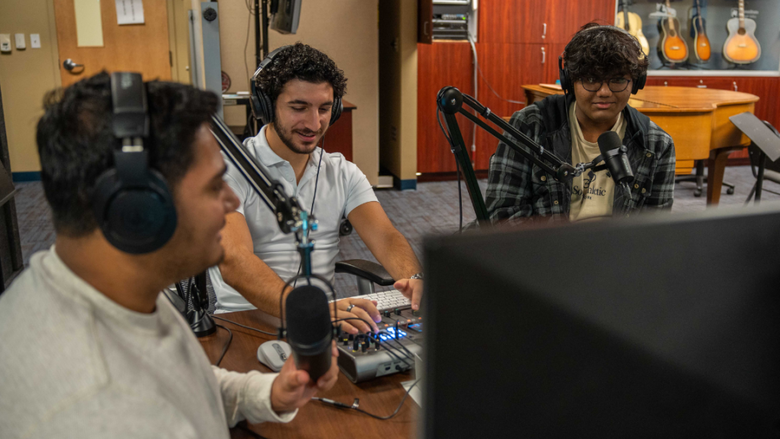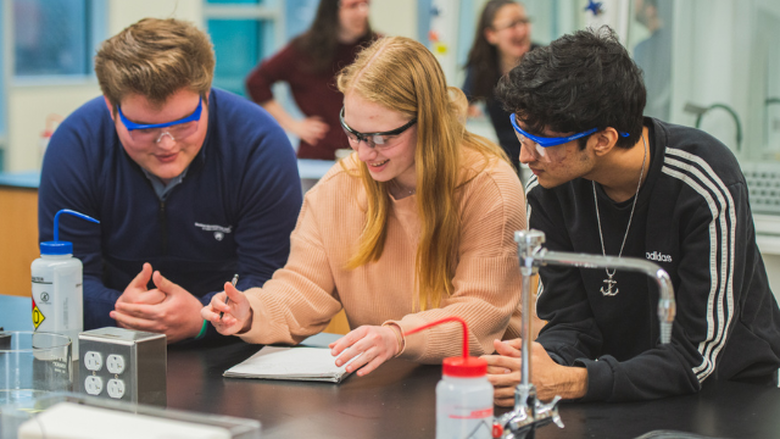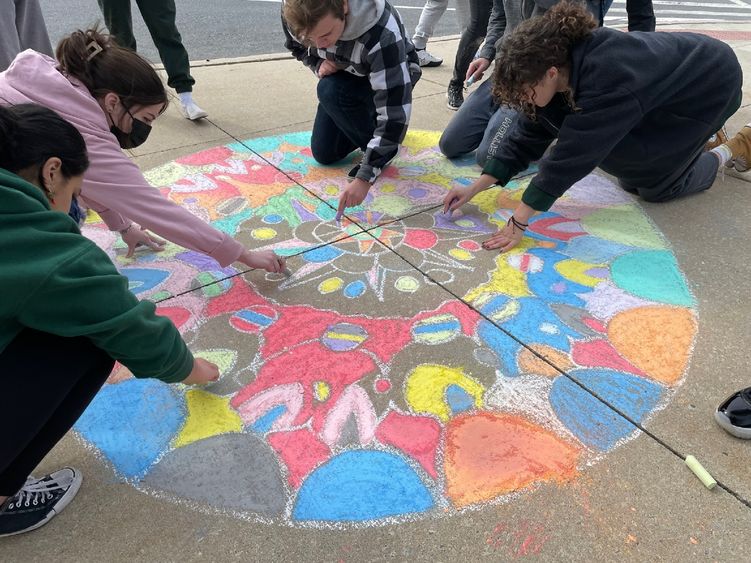
Penn State Lehigh Valley students in Associate Teaching Professor of Arts Administration Elizabeth Flaherty's Intersections Between Art and Psychology course recently collaborated on a chalk mandala created on the campus grounds. The initiative was led by student Angi Sayid for her final research project.
CENTER VALLEY, Pa. — Art has the power to bring people together, as demonstrated recently by a group of Penn State Lehigh Valley students.
Students in Associate Teaching Professor of Arts Administration Elizabeth Flaherty’s Intersections Between Art and Psychology course collaborated on a chalk mandala created on the campus grounds. The initiative was led by student Angi Sayid for her final research project.
The course includes discussion of art therapy techniques like mandalas, a drawn symbol in a circle often meant to be a physical representation of a person’s emotional state. They have long been used as an art therapy tool to help soothe negative emotions, calm anxiety and encourage self-expression.
“Students were tasked with identifying one thing they wanted to learn more about in this class. They had to do their own independent research and study,” Flaherty said. “Angi was very interested in the mandala. I said to her, ‘It’s a great topic, if you’d like to do more research.’ One question I had was, ‘How are you going to engage the class?’ Mandalas are usually either done on paper or made of cloth, but Angi was more interested in going outside and doing a group collaborative mandala.”
Sayid, a sophomore biology major with a minor in psychology, said she was drawn to the mandala because she was already familiar with them, but wanted to broaden her knowledge about them.
“Although mandalas are not part of my culture, my interest is in learning about other cultures. When I saw it fell into both art and psychology, I wanted to get to the bottom of it. I wanted to see what connection they had,” she said. “It wasn’t until about a month beforehand that I started speaking with Dr. Flaherty about what I could do. I knew I wanted to do something collaborative, and I found out there are two kinds of mandalas — the individual mandala, and a collaborative mandala, so it worked out perfectly.”
Flaherty secured the necessary permission the class needed to draw the image on campus grounds. As it happened, the project coincided with Penn State President-elect Neeli Bendapudi’s recent campus visit.
“I met up with Dr. Flaherty right before class started. I drew the outline in white because I knew I wanted it to be white. Dr. Flaherty stood in the middle of the circle and threw out a piece of chalk, then we made the circle,” Sayid said. “I had some friends help me with the designs in the center, just to save time. When it was ready, I went inside, went to class, did my presentation, then we all came outside and started coloring in the mandala.”
Flaherty said the project was a positive experience for all involved.
“I thought it was a tremendous and impactful process. It rained by noon or 1 p.m. the day we worked on it, so it washed away quickly. But mandalas are typically temporal, so it was in step with what you would expect from the mandala process,” Flaherty said. “This was the first time I got to teach the class. Just the fact that we could engage the students outside of the classroom on a large-scale collaborative effort — it was really powerful. We’ve all been cooped up with COVID, so re-engaging the students in a really creative way was cathartic, and I think it brought the class up to the next level.”
Sayid’s classmates enjoyed the project. For some, she said, working with sidewalk chalk was a new experience.
“One classmate I’d never spoken to before said he had never used sidewalk chalk. I thought about his inner child, and how as college students we’re so stressed all the time. This was a great stress reliever, and something for his inner child,” she said. “I had a really good time bringing everyone together in class. We work on everything individually — this was the first thing we worked on something together. I think it symbolizes our togetherness. Nobody told us what colors to use or how to color it in. We just grabbed a certain section and did what we had to do.”
